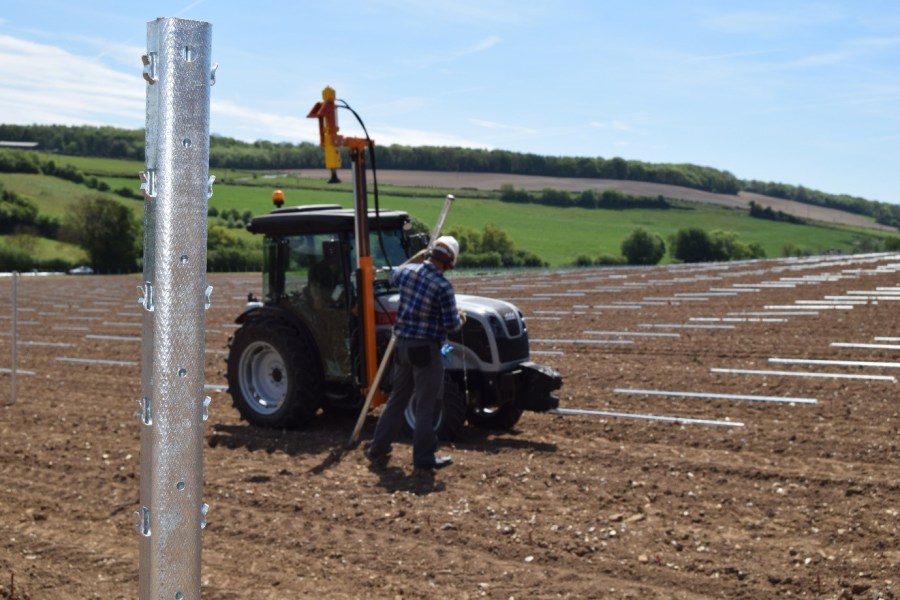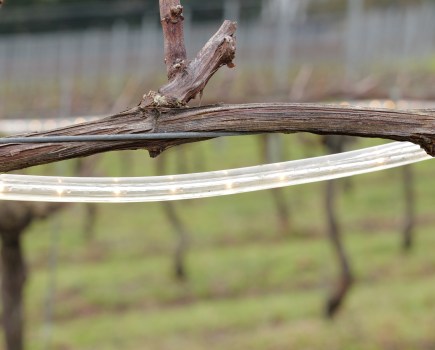With the increase in new plantings, the UK has seen a number of UK-based and European metal post suppliers enter the market. It’s safe to say that wood is no longer considered an economical or viable option for trellising vines; being used for purely aesthetic reasons with suppliers unable to offer guarantees beyond 10 years. That’s fine provided it is a conscious and informed decision.
The cost of the trellis and its installation can represent 50-60% of the initial budget of establishment and any material used to construct the trellis system should last 25 years, or at least the life of the vineyard. We all know that metal rusts, so why is it that metal posts have become the preferred option? It’s all down to the degree or type of zinc galvanising protection. Whether it’s simply added to the raw steel, and/or applied after production, understanding the differences in the types of zinc galvanising and their pros and cons, will help producers choose the right metal posts for their new vineyard establishments.
All metal vineyard post protection starts with the zinc coating added to the raw steel at the steel mills. The steel is then sold to the vineyard post manufacturer in coils ranging from 1.5 to 2.5mm in thickness. The cost of this steel is mostly dependent on the commodity market but is also affected by the value of zinc added to the raw steel. This is typically measured at 18 to 20 microns. Once manufactured, the finished post is then sold to the customer as a pre-galvanised post with the cost of added zinc ranging up to an average of 0.20p per post, depending on the microns of zinc in the metal. If buying from a German post manufacturer this is called band galvanised and from a French manufacturer it’s known as pre-galvanisé. The post manufacturing industry gives this type of post protection a 15-year life span and is suggested to be more suited to the warmer and drier climes of southern Europe. Anywhere north of Bordeaux is deemed less suitable for this type of pre-galvanised post. Manufacturers have identified that after 15 years corrosion will begin to occur, especially along the exposed edges where cuts to the metal were made during the manufacturing process.
A more robust finish, and more suitable to the UK climate, is the hot dipped galvanised (HDG) option. This starts with a hot rolled material post which is then dipped into a vat of zinc and heated to a specific temperature. The heat stimulates a chemical bond between the surface of the metal and the zinc, providing an additional hard and durable protective coating. Any exposed edges from the post manufacturing are protected, limiting any exposure susceptible to corrosion. There is a significant cost to this finish, about £1 per post more expensive, however, manufacturers will guarantee HDG posts for up to 25 years. This guarantee of protection also applies to sites where soil acidity is an issue and sub-surface protection is a concern.
The last 12 years have witnessed metal posts gaining ground as the preferred material for trellis construction. Virtually all of the early metal vineyard posts sold into the UK were HDG. However, more and more post manufacturers seeking opportunities in our growing industry have been tempting customers with offers of cheaper pre-galvanised posts by simply calling it ‘galvanised’. This lack of distinction between the types of galvanising has begun to muddy the waters and is misleading customers into a false sense of security. Capitalising on ‘a bargain’ and using the term ‘galvanised’ is sadly becoming the norm. If it’s a conscious and informed decision and you’re willing to take a risk then that’s fine. However, as the choice of vineyard posts expands it is becoming more important to be clear about the different galvanising options and to understand that saving a quid now may result in buying twice later.




